
Welcome to Hyperion Records, an independent British classical label devoted to presenting high-quality recordings of music of all styles and from all periods from the twelfth century to the twenty-first.
Hyperion offers both CDs, and downloads in a number of formats. The site is also available in several languages.
Please use the dropdown buttons to set your preferred options, or use the checkbox to accept the defaults.

| The Choir of Trinity College Cambridge, Stephen Layton (conductor), Harrison Cole (organ)» More |
| Worcester Cathedral Choir, Donald Hunt (conductor), Adrian Partington (organ)» More |
| St Paul's Cathedral Choir, John Scott (conductor), Andrew Lucas (organ)» More |
| The Rodolfus Choir, Ralph Allwood (conductor)» More |
| Huddersfield Choral Society, Aidan Oliver (conductor), Thomas Trotter (organ)» More |
from notes by Jeremy Dibble © 2023
Elgar répond aux paroles du psaume 29 avec vigueur, grâce à une écriture chorale puissamment contrapuntique, mais avec un doux interlude central aux mots «In his temple», avant de finalement revenir à la musique d’ouverture—même si l’œuvre se clôt sur «the blessing of peace» («la bénédiction de la paix»). Ces mots étant exceptionnellement répétés et accentués (le chœur les reprend en écho), c’est à se demander si, dès avril 1914, Elgar ne se doutait pas de ce qui allait arriver.
extrait des notes rédigées par Lewis Foreman © 2007
Français: Hypérion
Elgar reagiert auf die Worte des 29. Psalms mit Energie und kraftvoll-kontrapunktischem Chorsatz, aber einem zarteren Mittelteil als Interludium auf die Worte „In seinem Tempel“. Elgar kehrt schließlich wieder zur Musik des Anfangs zurück, schließt aber mit den Worten „[Der Herr] segne [sein Volk] mit Frieden“. Da diese Worte allein wiederholt und noch dadurch unterstrichen werden, dass sie durch den Chor echoen, muss man sich wundern, ob Elgar schon im April 1914 ahnte, was bevorstand.
aus dem Begleittext von Lewis Foreman © 2007
Deutsch: Renate Wendel
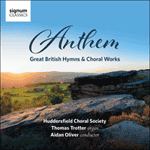 Anthem AnthemFounded in 1836, the Huddersfield Choral Society has developed an international reputation as one of the UK’s leading choral societies. This new recording features works that remain central to the choir's musical heritage: music by Handel, Elgar, ...» More |
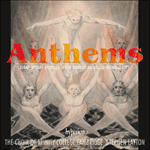 Anthems, Vol. 1 Anthems, Vol. 1Exciting accounts of eight anthems spanning nearly two hundred years, with a welcome emphasis firmly on recent works.» More |
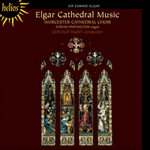 Elgar: Cathedral Music Elgar: Cathedral Music‘The Worcester performances are near ideal … vividly atmospheric recording’ (The Penguin Guide to Compact Discs)» More |
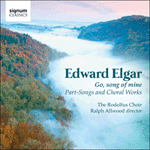 Elgar: Go, song of mine & other choral works Elgar: Go, song of mine & other choral works'Many an aspiring composer today would relish the lucrative market for sheet music afforded by the late nineteenth and early twentieth centuries' pass ...  BBC Music Magazine» More BBC Music Magazine» More |
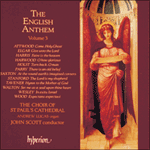 The English Anthem, Vol. 3 The English Anthem, Vol. 3‘A rich feast indeed’ (Gramophone) ‘This is a lovely programme’ (Organists' Review)» More |

